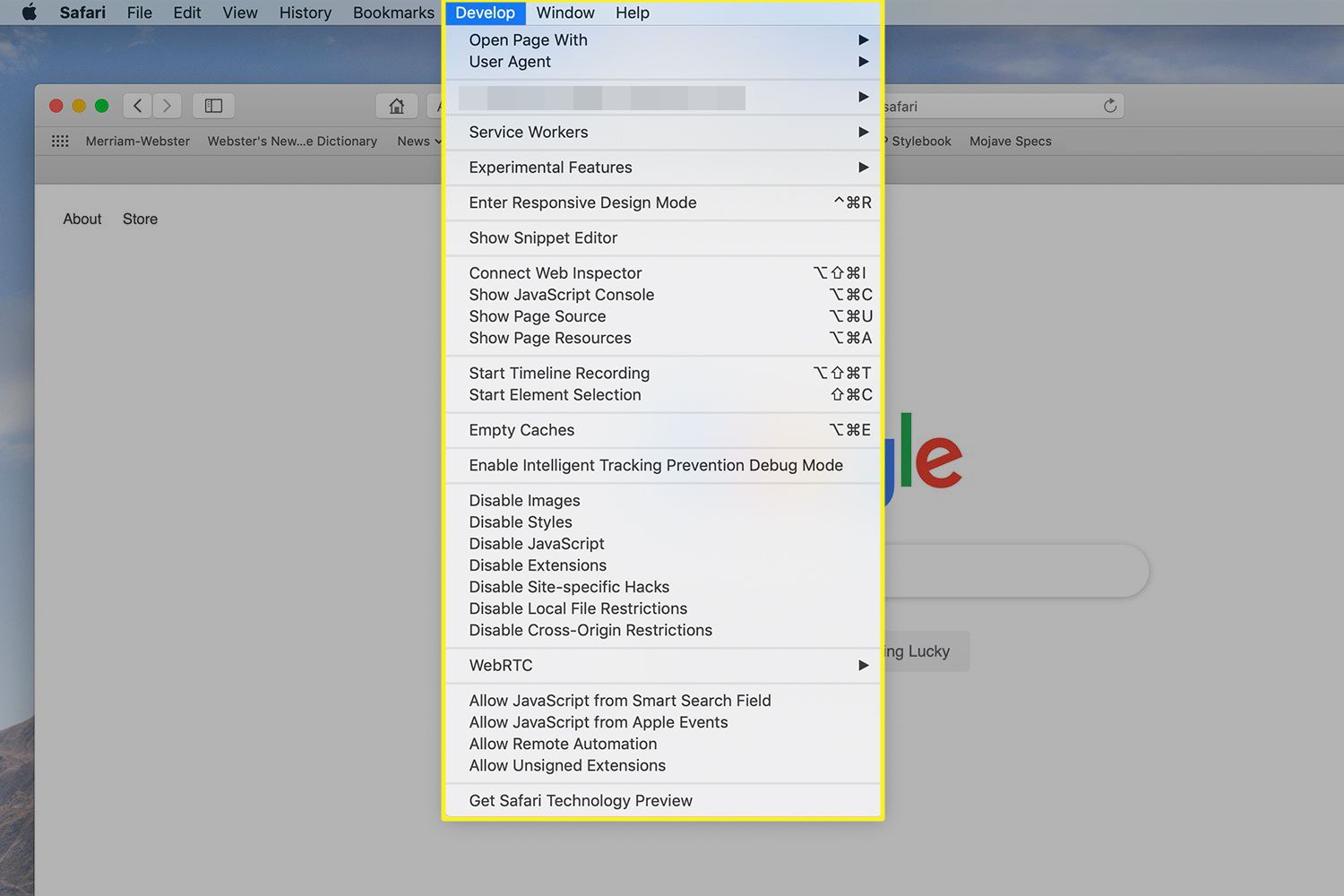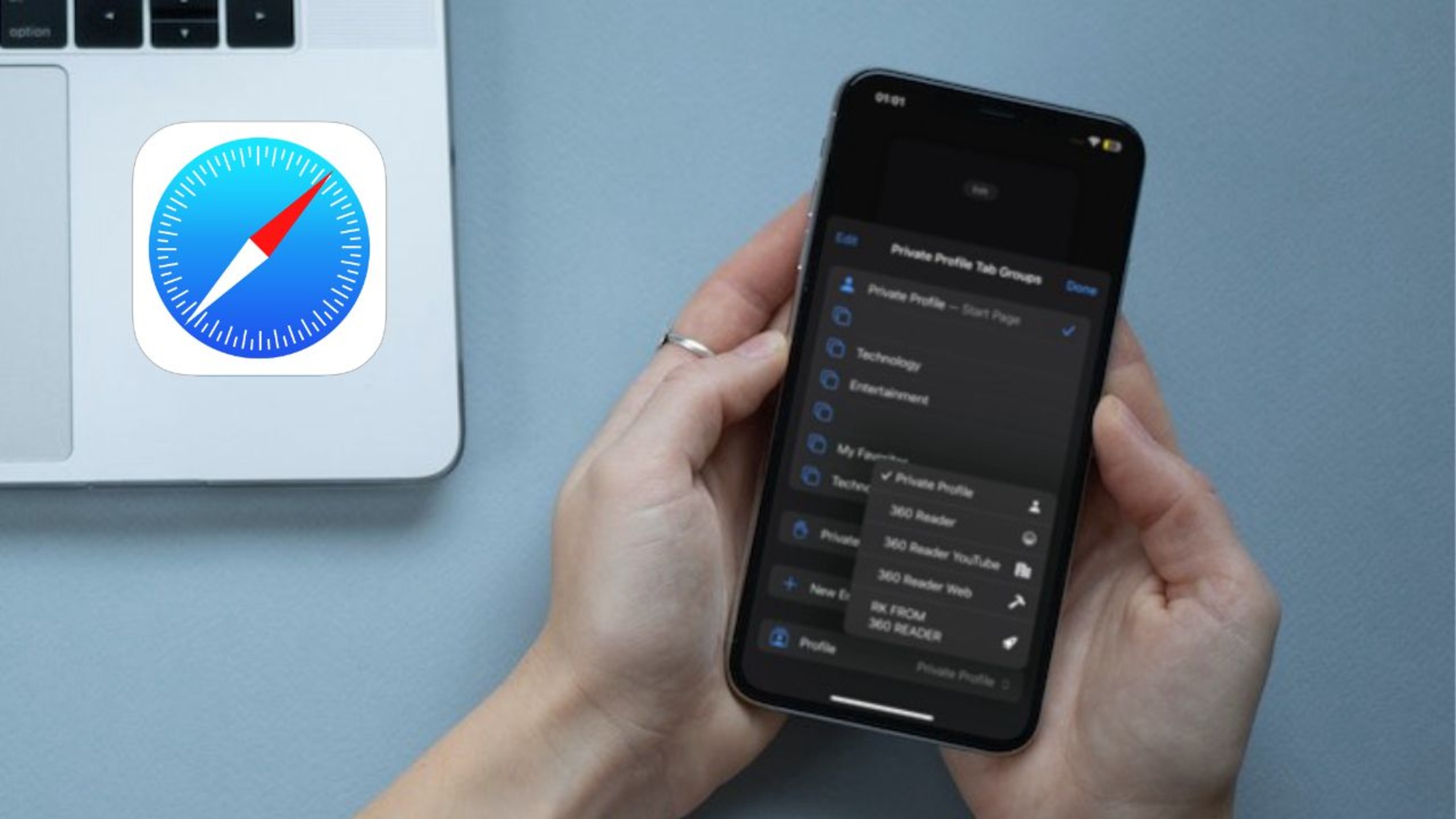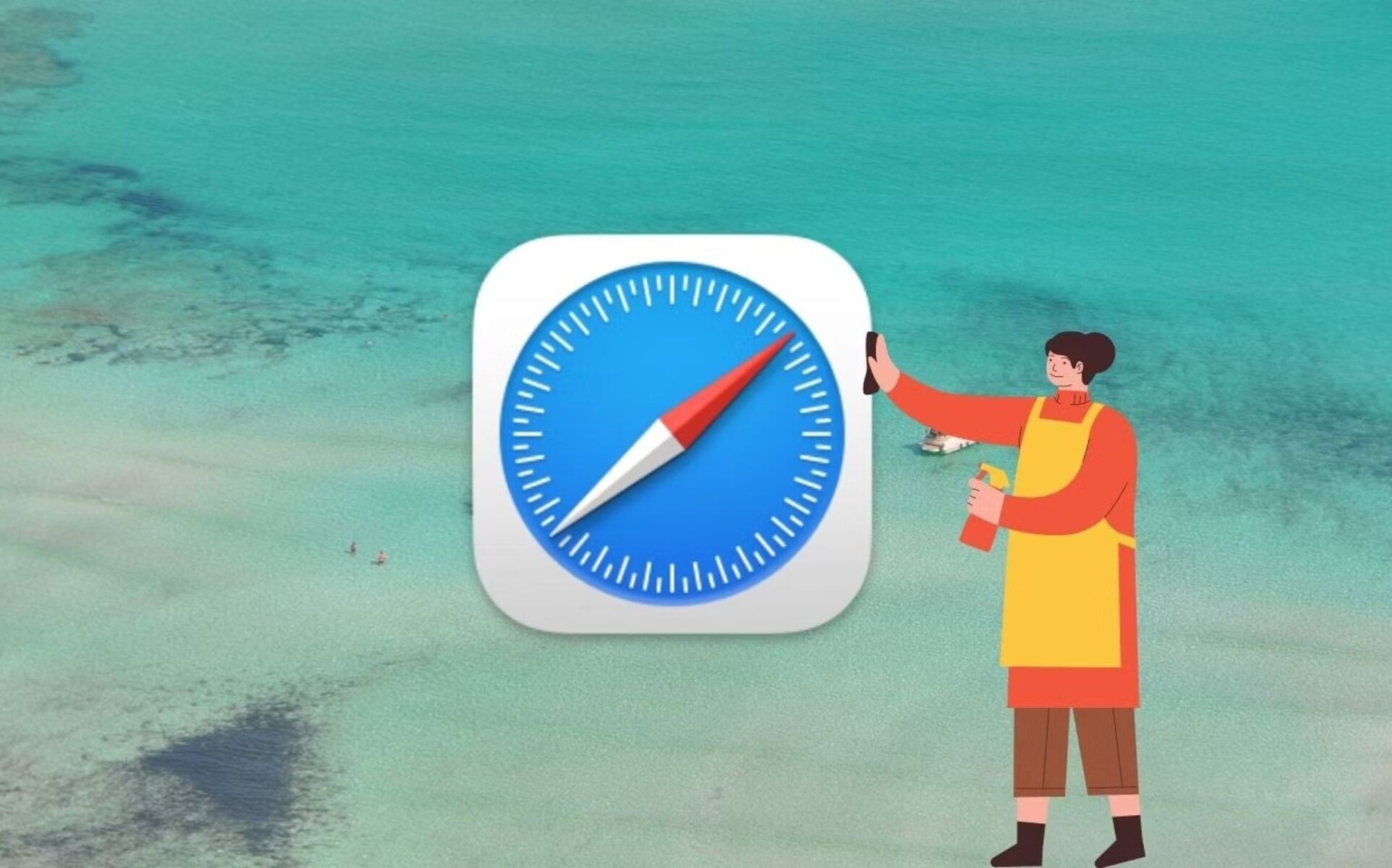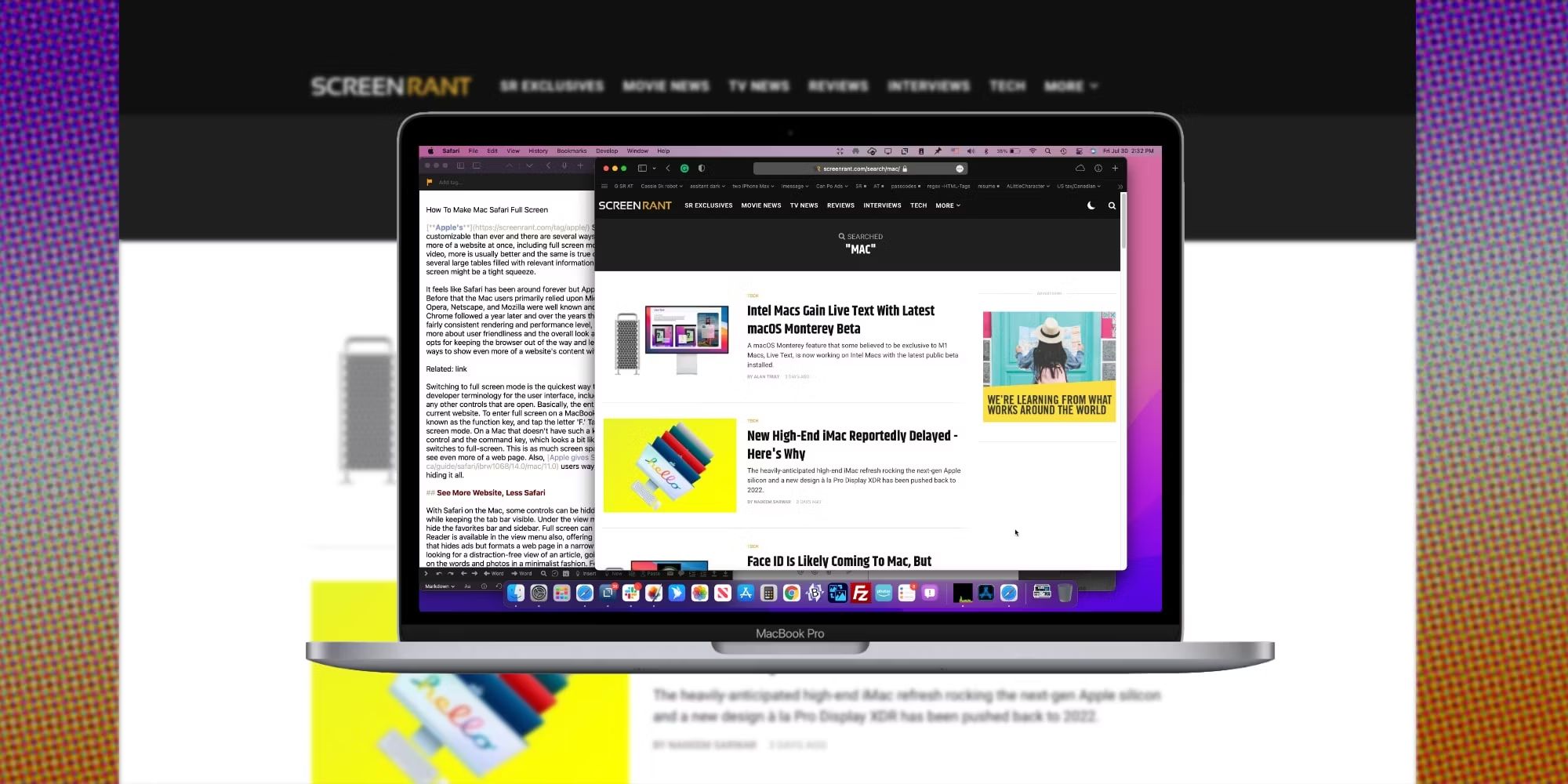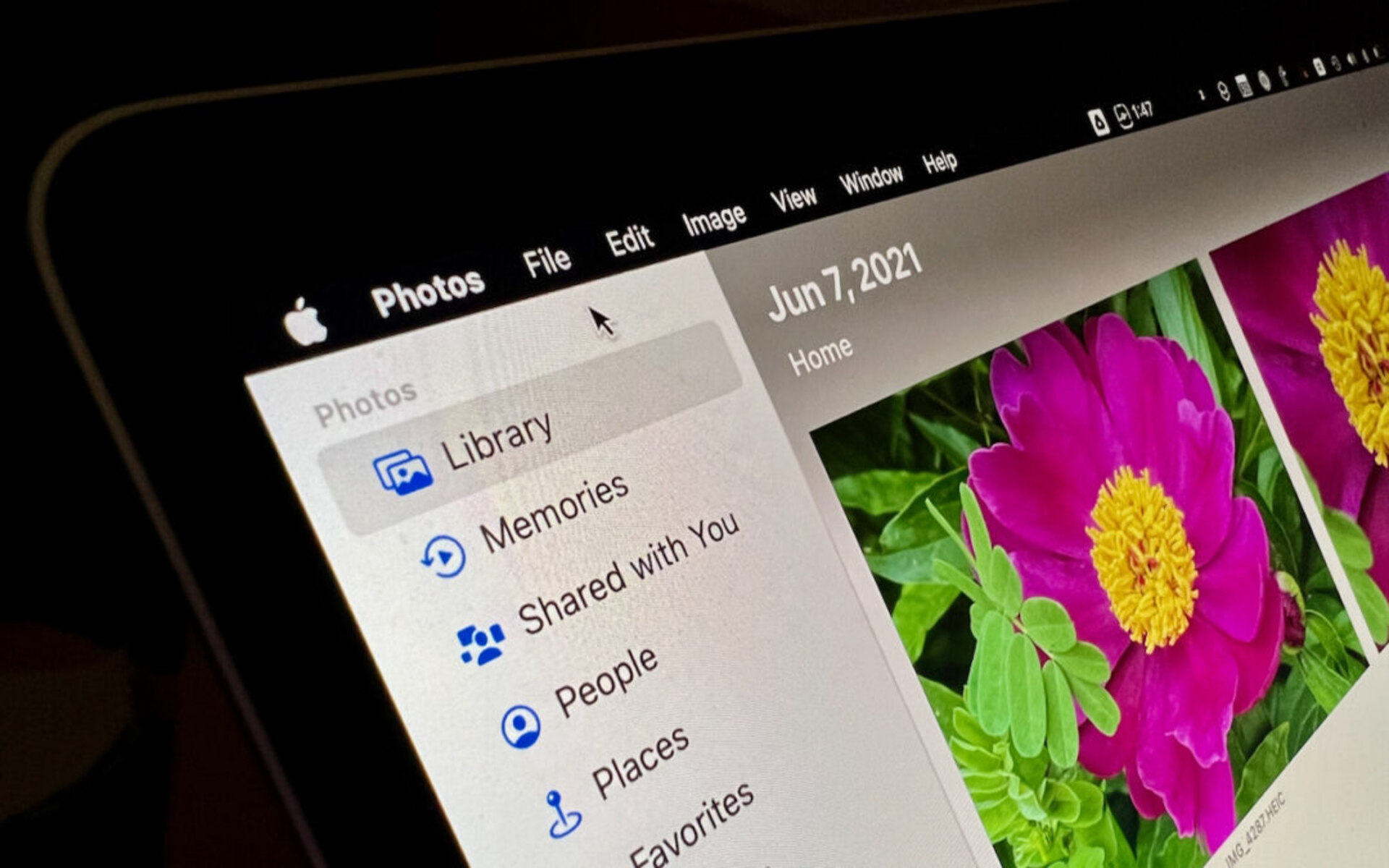Introduction
Safari, Apple's sleek and intuitive web browser, offers a plethora of features designed to enhance the browsing experience. One of the key elements of Safari is its menu, which provides access to a wide array of functions and settings. Whether you're using Safari on a Mac, iPhone, or iPad, knowing how to navigate the Safari menu can significantly improve your browsing efficiency and overall user experience.
In this article, we will delve into the various methods for accessing the Safari menu on both Mac and iOS devices. Additionally, we will explore how to customize the Safari menu to suit your specific preferences. By the end of this guide, you will have a comprehensive understanding of how to leverage the Safari menu to optimize your browsing activities.
Let's embark on this journey to uncover the intricacies of the Safari menu and unlock its full potential. Whether you're a seasoned Safari user or just getting started with this innovative browser, mastering the Safari menu will undoubtedly elevate your browsing endeavors. So, without further ado, let's dive into the world of Safari and unravel the secrets of its dynamic menu system.
Accessing Safari Menu on Mac
Accessing the Safari menu on a Mac is a straightforward process that provides quick access to a multitude of essential functions and settings. Whether you're looking to manage bookmarks, adjust preferences, or utilize various browsing tools, the Safari menu is your gateway to a seamless browsing experience.
-
Using the Menu Bar: The most direct way to access the Safari menu on a Mac is through the menu bar located at the top of the screen. Upon launching Safari, you'll notice the menu bar with options such as "Safari," "File," "Edit," "View," "History," "Bookmarks," "Develop," "Window," and "Help." Simply click on any of these options to reveal a dropdown menu containing a plethora of features and settings.
-
Keyboard Shortcuts: For those who prefer efficiency and convenience, Safari offers a range of keyboard shortcuts to access the menu swiftly. By pressing "Command" along with a designated letter or symbol, users can instantly navigate to specific sections of the Safari menu. For instance, "Command + ," opens the Preferences window, allowing users to customize their browsing experience with ease.
-
Contextual Menu: When browsing a webpage, users can also access certain Safari menu options through the contextual menu. By right-clicking on a webpage, a contextual menu will appear, presenting a selection of Safari menu functions tailored to the browsing context. This provides a quick and intuitive way to access specific features without navigating through the entire menu bar.
-
Using the Touch Bar (MacBook Pro): If you're using a MacBook Pro equipped with a Touch Bar, Safari offers a Touch Bar interface that provides convenient access to essential browsing functions. The Touch Bar adapts to the browsing context, displaying relevant options and controls, including those typically found in the Safari menu.
By familiarizing yourself with these methods, you can effortlessly access the Safari menu on your Mac, empowering you to harness the full potential of Safari's features and settings. Whether you're a casual user or a power browser, mastering the art of navigating the Safari menu on your Mac is a pivotal step toward optimizing your browsing experience.
Accessing Safari Menu on iPhone and iPad
Accessing the Safari menu on iPhone and iPad is essential for utilizing the full range of features and settings that Safari offers. While the interface may differ slightly from its Mac counterpart, the Safari menu on iOS devices provides seamless access to various functions, enabling users to customize their browsing experience and enhance productivity.
-
Using the Menu Bar: On iPhone and iPad, the Safari menu is accessed through the menu bar located at the bottom of the screen. When browsing in Safari, tapping the menu bar icon at the bottom reveals a menu containing options such as "Back," "Forward," "Share," "Bookmarks," "Add to Reading List," "Request Desktop Site," and "Settings." Each of these options opens up a world of functionalities, allowing users to navigate, save, and share content effortlessly.
-
Long-Press and 3D Touch: For devices that support 3D Touch, users can access additional menu options by applying pressure to the screen. A firm press on a link or webpage element triggers a contextual menu, providing quick access to features such as opening links in new tabs, adding to reading list, and sharing content. Similarly, a long-press gesture on certain elements within Safari can reveal context-specific menu options, offering a convenient way to interact with web content.
-
Customizing the Toolbar: Safari on iPhone and iPad allows users to customize the toolbar, providing a tailored browsing experience. By tapping the "Edit" option within the menu bar, users can add, remove, or rearrange toolbar items to suit their preferences. This feature empowers users to prioritize and access their most-used functions directly from the toolbar, streamlining their browsing activities.
-
Gestures and Swipes: Safari on iOS devices supports various gestures and swipes that enable users to access menu-like functions seamlessly. For instance, swiping left or right on the toolbar can navigate between open tabs, while a two-finger swipe down on a webpage triggers the "Request Desktop Site" option, allowing users to view the desktop version of a website.
By mastering these methods for accessing the Safari menu on iPhone and iPad, users can unlock the full potential of Safari's features and settings, fostering a more intuitive and efficient browsing experience on their iOS devices. Whether you're browsing on the go or relaxing at home, understanding how to navigate the Safari menu on your iPhone and iPad is a valuable skill that enhances your overall browsing proficiency.
Customizing Safari Menu
Customizing the Safari menu allows users to tailor their browsing experience to align with their specific preferences and browsing habits. Whether you're using Safari on a Mac, iPhone, or iPad, the ability to customize the menu empowers you to streamline your workflow, prioritize essential functions, and optimize your overall browsing efficiency.
Mac Customization Options
On a Mac, Safari offers a range of customization options to personalize the Safari menu and toolbar. Users can navigate to the "View" menu and select "Customize Toolbar" to access a plethora of toolbar customization features. This allows for the addition, removal, and rearrangement of toolbar items, including frequently used functions such as "Back," "Forward," "Share," "Add Bookmark," and more. By tailoring the toolbar to include the most relevant and frequently accessed functions, users can expedite their browsing activities and access essential features with ease.
Furthermore, Safari on Mac enables users to customize the Favorites bar, which provides quick access to frequently visited websites. By adding, removing, or rearranging bookmarks within the Favorites bar, users can create a personalized browsing hub that aligns with their browsing habits and preferences. This feature enhances accessibility to favorite websites and streamlines the process of navigating to frequently visited online destinations.
iOS Customization Options
On iPhone and iPad, Safari offers customization options that cater to the unique interface and user experience of iOS devices. Users can customize the toolbar by tapping the "Edit" option within the menu bar, allowing for the addition, removal, and rearrangement of toolbar items to suit individual preferences. This feature empowers users to prioritize essential functions and access them directly from the toolbar, enhancing browsing efficiency and convenience on iOS devices.
Additionally, Safari on iOS devices allows for the customization of the Share Sheet, which appears when users tap the "Share" icon within Safari. By managing the available actions and rearranging the order of sharing options, users can personalize the Share Sheet to align with their preferred sharing methods and streamline the process of sharing web content with others.
By leveraging these customization options, users can tailor the Safari menu and toolbar to align with their unique browsing habits and preferences, fostering a more personalized and efficient browsing experience across Mac, iPhone, and iPad devices. The ability to customize the Safari menu empowers users to optimize their browsing workflow, prioritize essential functions, and enhance their overall browsing proficiency.
Conclusion
In conclusion, mastering the art of accessing and customizing the Safari menu on both Mac and iOS devices is a pivotal step toward optimizing the browsing experience. The Safari menu serves as a gateway to a myriad of essential functions, settings, and features, empowering users to streamline their workflow, prioritize essential tasks, and enhance overall browsing efficiency.
By understanding the various methods for accessing the Safari menu on Mac, including utilizing the menu bar, keyboard shortcuts, contextual menus, and the Touch Bar for MacBook Pro users, individuals can effortlessly navigate through the extensive array of features and settings offered by Safari. These access points provide quick and intuitive ways to interact with the browser, ensuring that users can leverage the full potential of Safari's capabilities.
Similarly, on iPhone and iPad, the Safari menu offers seamless access to essential functions through the menu bar, long-press gestures, and customizable toolbar options. The ability to customize the toolbar and Share Sheet empowers users to tailor their browsing experience to align with their unique preferences and habits, fostering a more personalized and efficient browsing experience on iOS devices.
Furthermore, the customization options available for both Mac and iOS devices enable users to prioritize essential functions, streamline their workflow, and enhance overall browsing proficiency. By customizing the Safari menu and toolbar, users can create a browsing environment that caters to their specific needs, ultimately elevating their browsing endeavors to new heights.
In essence, the Safari menu is not merely a collection of options and settings; it is a gateway to a personalized and efficient browsing experience. Whether you're a casual user or a power browser, mastering the Safari menu empowers you to harness the full potential of Safari's features and settings, fostering a seamless and intuitive browsing experience across all your devices.
As you continue your journey with Safari, remember that the Safari menu is your ally, offering a wealth of tools and settings to enhance your browsing activities. By delving into the intricacies of the Safari menu and customizing it to align with your preferences, you are embarking on a path toward a more personalized, efficient, and enjoyable browsing experience.







